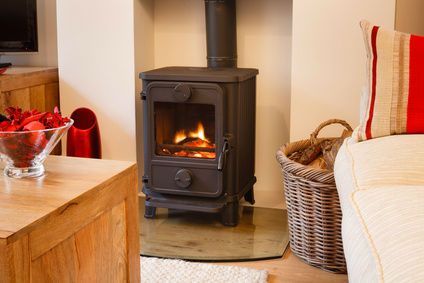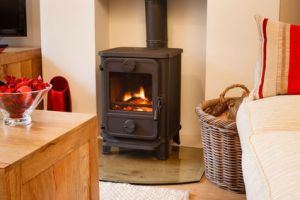
One of the things that many of us dread about winter is higher energy bills. In areas of the country subject to extreme cold temperatures, those heating bills can be almost crippling, but no matter where you live, opening that envelope when the bill arrives is not something you probably look forward to.
Green heat sources can help you stay warm and save money on your utility bills.
Geothermal heating
Energy Star reports that geothermal heating is one of the most efficient and effective heating technologies available today, as it uses the earth’s natural heat. It’s a limitless source of energy, as the earth contains hot water and steam.
The deeper you go into the earth, the hotter it gets, but it isn’t necessary to dig deep to take advantage of it. Just a few feet below the surface, the temperature of the water remains constant, depending on where you live, anywhere from 42 to 80 degrees Fahrenheit.
A ground source or geothermal pump uses this heat stored underground to increase the efficiency of a heating system. The pump can even cool a house during the hot summer months, while warming it during the winter. When it’s cold outside, the fluid absorbs the heat from the earth, bringing it inside to warm the air. In the summer, the heat exchange works in reverse.
Installing a geothermal heating system isn’t cheap, but it generally pays for itself in 5 to 8 years, and can also add significant resale value to your home. There are also special incentives available to help offset the cost of adding a system to your home from federal, state, and local governments as well as power providers.
Wood stoves
A wood stove is one of the most popular alternative heating sources. MSN Real Estate reports that the cost savings of heating a home with wood, versus oil, can be significant. For example, heating a home in Ontario, Canada, subject to extreme cold temperatures, generally costs $4,000 with oil, but with a wood stove it costs a few hours of chopping wood – or purchasing several cords of wood, with the price on average for a 4-feet by 4-feet by 8-feet stack ranging from $150 to $250.
While older or improperly-used stoves produce smoke and pollution as well as reduce air quality, newer, EPA-certified stoves are said to deliver about 90% less smoke and about 30% more efficiency.
Passive solar heating
Your home can also take advantage of the sun’s free heat, which is constant and renewable. You don’t need any unsightly solar arrays to use these benefits either. It has little to no moving parts and requires minimal upkeep. Systems integrate several different non-intensive measures like large, south-facing windows that are shaded by deciduous trees, or an overhang that keeps the sun out during the summer, but allows it in during the winter.
Using stone or concrete materials in the construction of a home can also help to absorb heat during peak sun hours, releasing the stored heat into the home after dark. A passive solar home still needs some mechanical equipment, like a forced-air system or radiant floor heating to keep temperatures warm in the winter.
 According to Energy.gov, using passive solar design for heating and cooling can be environmentally friendly and cost effective, with heating costs reduced to less than half the cost of heating a typical home.
According to Energy.gov, using passive solar design for heating and cooling can be environmentally friendly and cost effective, with heating costs reduced to less than half the cost of heating a typical home.
If you’re not ready or able to take advantage of these alternative energy sources just yet, but want to stay warm this winter without breaking the bank, instead of turning up the heat, consider throwing on a sweater and be sure to keep plenty of blankets on hand.
Cover bare floors with throw rugs and block any drafts with weather stripping, or a rolled up towel. Before you go to bed, run a hot pan over your sheets, a common method of staying warm at night prior to the invention of modern heating systems.
-The Alternative Daily
Sources:
http://www.energystar.gov/certified-products/detail/heat_pumps_geothermal?fuseaction=find_a_product.showProductGroup&pgw_code=HP
http://homeguides.sfgate.com/green-heating-alternatives-78479.html
http://www.earthtoair.com/how-geothermal-heating-and-cooling-works.php
http://www.thegreenestdollar.com/2008/10/alternative-ways-to-heat-your-home
http://realestate.msn.com/article.aspx?cp-documentid=13856165
http://energy.gov/energysaver/articles/tips-passive-solar-heating-and-cooling

